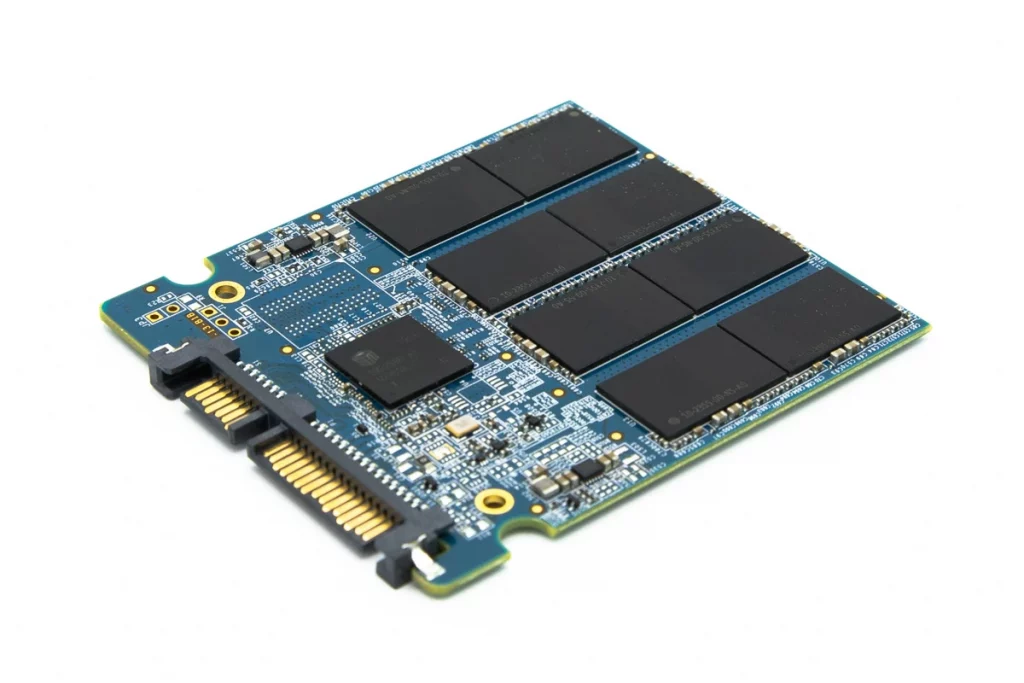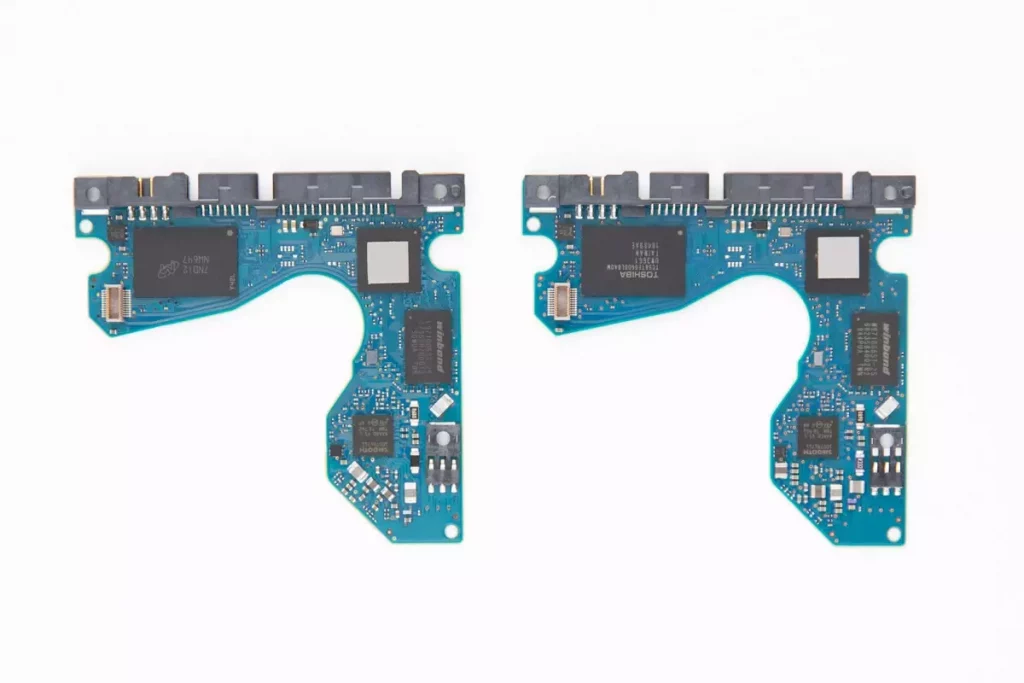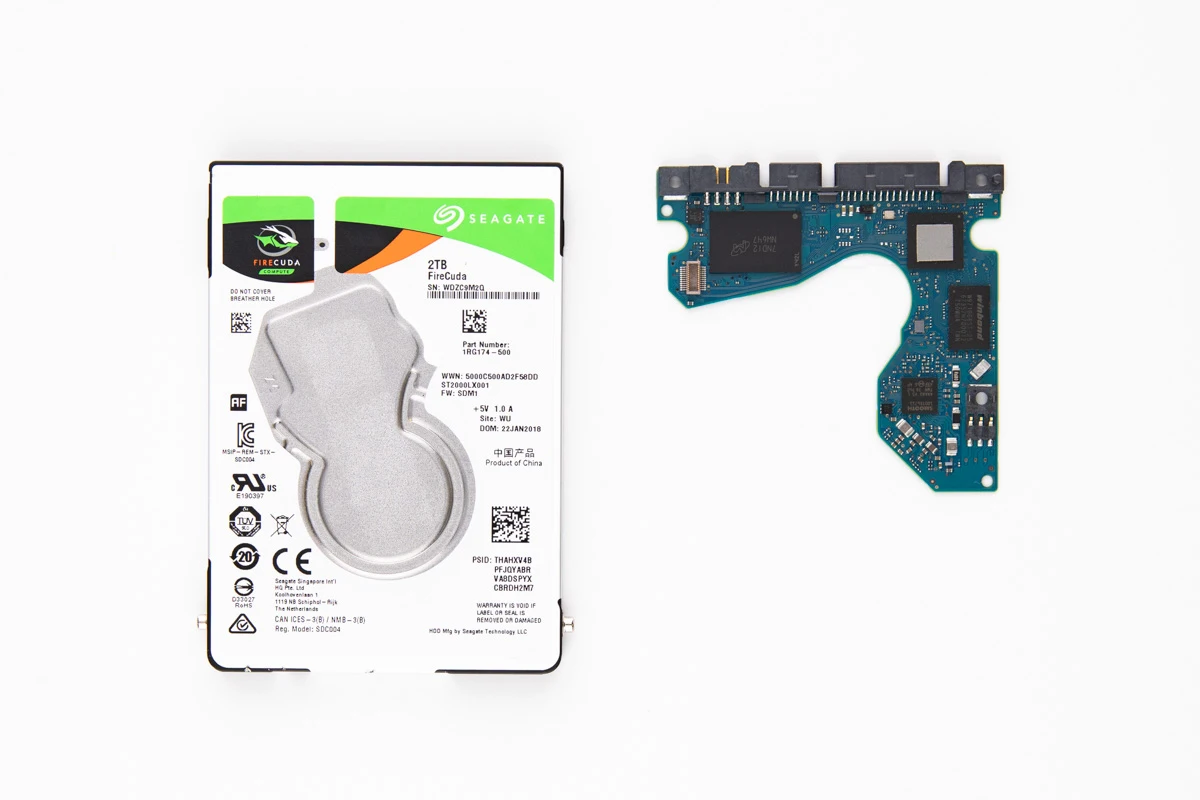When it comes to choosing the right storage for your computer, two acronyms come to mind: SSHD and SSD. Both options have their pros and cons, and it can be challenging to decide which one to go with. In this blog, our team will explore the differences between SSHD and SSD and help you choose the right storage option for your needs. Review our blog on the topic of hybrid hard drives vs. SSD and choose the most suitable storage for your needs.
Understanding SSHD
SSHD stands for Solid State Hybrid Drive, a type of storage device that combines the benefits of a traditional hard drive and a solid-state drive. An SSHD contains a spinning disk and a small amount of NAND flash memory chips, which act as a cache for frequently accessed files.
The spinning disk portion of the SSHD stores large amounts of data, while the NAND flash memory speeds up the access times for frequently accessed files. The SSHD’s controller automatically identifies and moves frequently accessed files to the NAND flash memory, allowing faster read and write speeds.
One of the main advantages of Solid State Hybrid Drive (SSHD) is that it balances high capacity and speed. Since the spinning disk portion of the SSHD can store a large amount of data, you do not have to sacrifice storage capacity for speed. Additionally, since the NAND flash memory acts as a cache for frequently accessed files, you get faster access times for those files, which can help improve overall system performance.
Understanding SSD
SSD stands for Solid State Drive, a type of storage device that uses NAND-based flash memory to store data. Unlike traditional hard disk drives (HDD), solid-state storage is built with no moving parts, making them more durable and reliable.
Since SSDs use NAND-based flash memory, they can access data faster than traditional hard drives, resulting in faster boot times, file transfers, and application load times. Additionally, SSDs are quieter, use less power, and generate less heat than traditional hard drives.

One of the main advantages of SSDs is their speed. Since SSDs do not have any moving parts, they can access data much faster than traditional hard drives, resulting in improved system performance. Additionally, since SSDs are more durable and reliable than hard disk drives, they are less likely to fail due to physical damage.
Difference Between SSHD and SSD - SSD vs. SSHD
While SSHD and SSD have advantages, there are some key differences between the two that you should consider before choosing which one to use.
Main Points When Comparing – SSD vs. Hybrid Hard Drive
- Speed. SSDs are faster than SSHDs because they do not have any moving parts. This means SSDs can access data much faster than SSHDs, improving overall performance.
- Capacity. SSHD drives have a larger storage capacity than SSDs because they contain a spinning disk that can store a large amount of data. However, the NAND flash memory in an SSHD is typically only around 8-32 GB, which means that only frequently accessed files will benefit from the faster access times.

- Price. SSDs are generally more expensive than SSHDs. This is because SSDs use NAND-based flash memory, which is more expensive than traditional hard drive technology. However, the price of SSDs has been decreasing over the years, making them a more affordable option for consumers.
- Reliability. SSDs are more reliable than SSHDs because they have no moving parts. This means that SSDs are less likely to fail due to physical damage or wear and tear.
- Noise and Power Consumption. Since SSDs have no moving parts, they are quieter and consume less power than SSHDs. This can be an important consideration for those concerned about noise levels or who want to reduce their power consumption.
Which One Should You Choose? Hybrid SSHD vs. SSD
When the choice is – Hybrid HDD vs. SSD – it ultimately comes down to your individual needs and preferences. If you need a large amount of storage capacity and are willing to sacrifice some speed, an SSHD may be the right choice.
On the other hand, if speed is your top priority and you do not mind paying a premium, an SSD may be the better choice. Additionally, if you want a more durable, reliable storage device that consumes less power, an SSD is the way to go.
It is also worth noting that you do not necessarily have to choose between SSHD and SSD. Some computer manufacturers offer laptops and desktops with SSHD and an SSD. This allows you to benefit from the larger capacity of the SSHD while still getting the speed and reliability of an SSD.
In conclusion, when considering hybrid storage vs. SSD, we should accept that both have advantages and disadvantages, and the right choice depends on your individual needs and preferences. If you need a large amount of storage capacity and are willing to sacrifice some speed, an SSHD may be the right choice. If you prioritize speed, reliability, and durability, an SSD is the way to go. Ultimately, it is important to carefully consider your needs and do your research before deciding which storage device to choose.
Request Help
"*" indicates required fields
